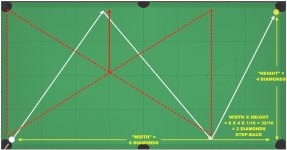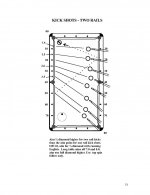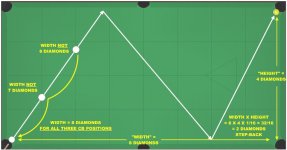Unfortunately, Reid needlessly complicates things the way he demonstrates it in the video.Thank you Patrick, that makes a TON of more sense!!!
I'd ignore the "equal-opposite" measurement he does with his cue and just calculate the 2nd rail target the way I show. Then you can hit that target by using the "mirror" aiming method Reid shows or some other simple 1-rail kick aiming method - they all produce the same result (after adjusting for table conditions).
pj
chgo


